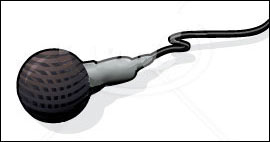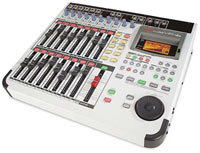Guitar players who are looking to record live sound for the first time will inevitably see a large amount of mistakes and errors along the way. Most beginners are simply satisfied with propping up a cheap microphone headset against the amplifier speaker and jamming away. Once the initial “cool” factor of being able to record music dies, guitarists looking to record their favorite riffs or songs will realize that a little more thought needs to go into the recording process.

There are several ways to g about recording. For guitar players with 1-2 band members, or soloists, the easiest and cheapest way is to go through a computer or laptop. A cheap connector can be bought at most tech stores, such as Radio Shack- that lets the guitar player plug in right into the audio-in line on a laptop or computer. This method usually requires software that allows the player to distort, mix, or alter the incoming signal. This is by far the cheapest method, but only suitable for extremely small bands and soloists.

A less economical yet more efficient wy of recording for small bands is via recording interfaces. These interfaces often will cost anywhere from $100-$400, depending on the quality and options. They are usually fairly small boxes that enable input of microphones, instrument lines, and offer volume/distortion controls. This usually eliminates the need for buying extra guitar recording software, as it is included with most interfaces. This method is far more stable than simply hooking into an audio-in line, as it allows for more control and will support smaller bands easier.

Multi-track ecorders are usually needed for larger bands. These recorders often come in packages that include microphones, monitors, and the necessary cables and accessories. Most multi-track recorders will have a feature to burn the music onto a CD or cassette, or otherwise will let a user port data onto a computer for further editing. Multi-track recorders are a step above recording interfaces, since they offer even more control over tones, volumes, and sound effects of instruments or vocals that are being recorded. Most multi-track recorders will cost $400-$2,000, and usually are the only choice for larger bands looking to record music. They also make very portable solutions, since they do not require a computer to function.

For capturing live sound, a separate device is usually needed. These are called field recorders, and are usually fairly advanced- as the price tag shows. These devices can easily reach a thousand or couple of thousand dollars. Field recorders usually incorporate condenser microphones into a very small package, of which is very sensitive to sound, but won’t capture background noise. There are of course field recorders that are somewhat cheap, but it isn’t recommended to invest in them. The cheaper versions will almost always offer poor quality sound, and will heavily lack features necessary to get CD quality sound.
Choosing the recording method for the correct situation is ideal. Of course, setting up a cheap microphone next to an amplifier will give the worst loss of sound quality- as most guitar players will find out. Investing in a cheap connector and a software package should be the absolute least that any serious guitar player should do. When things start to get more serious, there are a lot of areas to improve before moving onto the next piece of recording hardware- microphones, monitors, stands, mixers, compressors, and much more should all be considered before taking the next step to buying a more expensive recording interface.
